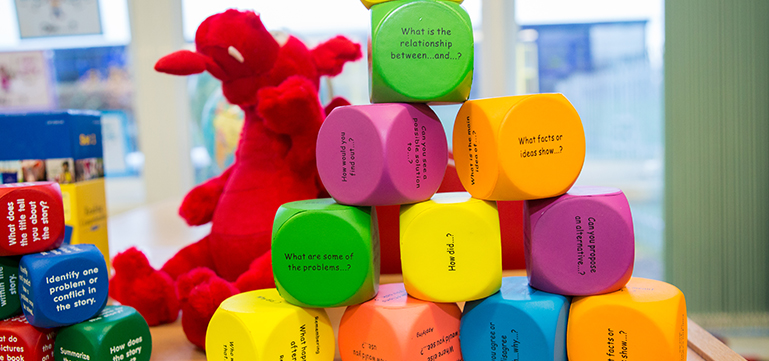Encouraging independent learners

Quick links:
Context and background to sector-leading practice
Pembroke Dock Community School took on this approach in light of Professor Graham Donaldson’s Successful Futures document and the development of the new curriculum for Wales. This approach supports the development of numerous aspects of one of the four purposes of the curriculum – all children and young people will be ambitious, capable learners.
Description of nature of strategy or activity
The school bases its teaching and learning strategy on research carried out by Professor John Hattie on a visible learning approach. In order to encourage pupils to be responsible for their own learning and to become more capable to assess their own work, the school introduced the following strategies:
-
A process of gathering, analysing, interpreting and using information about pupils’ progress and achievement to improve teaching and learning.
-
Allowing pupils to take ownership of their own learning and skills development.They know where they are on the skills continuum and what their next steps are.Using their ‘Learning Ladders’ booklets, many can track and assess their own progress effectively.
-
Enabling pupils to recognise what they need to do when they come across something they don’t know and to have appropriate strategies to progress with their learning.
-
Encouraging pupils to seek feedback from their teachers and respond to it effectively, and, more importantly, encourage them to give feedback to staff about their teaching.
-
Enabling pupils to become active in their learning.They can ask and find the answer to the following questions. Where am I going? How am I going there?Where to next?These questions correspond to notions of feed up, feedback, and feed forward.
-
Enabling pupils to employ a range of meta-cognitive strategies developed through a shared language of learning.
-
Encouraging pupils to see learning as hard work, with a growth mind-set and a desire to succeed.
-
Encouraging pupils to understand what the learning intentions are and the importance of being challenged by the success criteria.
-
Enabling pupils to use effective tools for self-assessment and challenge themselves well to improve.
-
Using effective assessment for and of learning. The school has a highly successful marking policy so that teachers provide consistent and effective written feedback to pupils.
What impact has this work had on provision and learners’ standards?
Through this approach, pupils can learn more independently and can articulate what they are learning and why. They can talk about their learning and the strategies they are using to learn. Pupils can articulate their next learning steps and can use self-regulation strategies effectively. Pupils can also set their own goals and aspire to challenge. They also see errors as opportunities to learn. Teachers use pupils’ feedback to adapt their planning and teaching to take pupils’ learning further. Pupils want to succeed in their learning and recognise effective ways to move this forward. Pupils know their learning needs very well.
How have you shared your good practice?
Pembroke Dock Community School has shared its good practice across Wales through holding open days for colleagues to visit and to take part in learning walks to see the strategies in action.